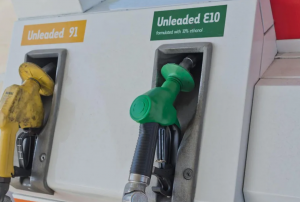On 5th June 2021, World Environment Day, PM Narendra Modi released the “Report of the Expert Committee on Road Map for ethanol blending in India 2020-2025,” published by NITI Aayog. The theme for this year’s event was ‘promotion of biofuels for a better environment’.
In the report, the committee laid down the roadmap to achieve 20% ethanol blending in petrol (E20) in the country by 2025. Currently, the proportion is at 8.5%. The report provides two reasons for this policy – that it would save India ₹30,000 Cr (US$ 4 billion) annually in the import bill, and that ethanol is a less polluting fuel and offers equivalent efficiency at lower cost than petrol.
Background and History of the Policy
The union government has been trying to bring an Ethanol Blended Petrol (EBP) policy since 2004. In 2018, the National Policy on Biofuels provided an indicative target of 20% ethanol blending under the EBP Programme by 2030. The 2021 report is an attempt to fast track the same by 5 years. Use of 5% EBP (E5) and 10% EBP (E10) were notified in 2015 and 2019 respectively by the MoRT&H. All vehicles produced in India since 2008 are compatible with E10.
Although the policy certainly looks good on paper and is founded on presumably good intentions, its results and implications are far off. Jonah Goldberg, a fellow at the American Enterprise Institute, succinctly expressed his argument against ethanol blended fuels:
“Ethanol is stupid, wasteful and bad for cars (because it’s corrosive and inefficient), the economy and the environment.”
Environmental Impact
Although the report cites two studies that show that E10 and E20 blends could reduce Hydrocarbon emissions by up to 20%, these numbers only show a fraction of the entire picture. These studies only measure the final emissions from the vehicles, and not over the lifetime of these fuels. A study from the University of Michigan found that biofuels create more greenhouse gases than petroleum. Moreover, ethanol production and distribution is energy-intensive, so it contributes to more greenhouse gas emissions.
Ethanol production in India primarily happens from sugarcane, which is a water intensive crop. This is a major concern, especially given India’s rapidly depleting groundwater levels. Curiously, sugarcane is primarily grown in the relatively dry areas in the state of Maharashtra, only because of subsidies support – causing more harm to the environment.
Faulty Policy Design
The target of 2025 was set by the authors of the report after noting that there is surplus sugar production in the country. But the primary reason for the surplus in production is due to the subsidies that go into the industry. Sugar production from sugarcane in India is actually not viable without government support. In the previous season, sugar contracts in the international market were trading at ₹21-22 per kg, while the cost of production in India was ₹32. Recently, Prakash Naiknavarne, the managing director of the National Federation of Cooperative Federation of Cooperative Sugar Factories Limited, stated that lack of government support will result in a ‘vertical collapse of the sector’. This clearly indicates that the industry is highly dependent on government support and subsidies.
The prices at which ethanol is procured for blending is decided not in the open market, but by the Cabinet Committee on Economic Affairs (CCEA). Prices actually play an important role in signalling to various market participants the supply and demand of a particular commodity. But when prices are decided outside the market, they send wrong signals. For instance, the Minimum Support Price (MSP) for various agricultural commodities incentivises high production despite limited demand. This creates a slump in market prices, thus, feeding into the need for MSPs.
Even the efforts to combat an ‘unfavourable’ trade balance of the country due to high imports are rooted in faulty mercantilist ideas of export-led economic growth.
Impact on Consumers
The vehicles that are currently on Indian roads are not E20 compliant. If E20 fuel is used in them, it will lead to the corrosion of several crucial components in the engine, due to the water content in ethanol. The current vehicles made for E0 fuel (no ethanol content) are compatible with E10 but they exhibit significantly lower efficiency.
According to the Society of Indian Automobile Manufacturers (SIAM), retrospectively fitting existing vehicles to make them E20 compliant is an impossible task considering mainly the large population of 20 Cr vehicles that are not compatible, and the cost associated with it, which will have to be borne by the consumers.
Ethanol also has a significantly lower calorific value than petrol, which would reduce the fuel economy of the vehicles. Consumers will thus have to spend more on fuel. Moreover, the government’s claim that ethanol is cheaper than petrol is a claim contradictory to facts. According to its own report, the Ex-mill Ethanol price is in the range of ₹51.55-62.65 based on the source, while the base price of petrol as on 16th July in Delhi is ₹41.00.
As SIAM has recommended, it is more prudent to first focus on making E10 universal in the country since vehicles are already compliant with it.
To conclude, for the environment and the economy at large, it is imperative that the government allows markets to decide when and to what extent it would be feasible to blend ethanol with petrol. A top-down approach would prove costly for citizens and may not have equivalent benefits for the environment.
Read more: Staying Logically Informed
Post Disclaimer
The opinions expressed in this essay are those of the authors. They do not purport to reflect the opinions or views of CCS.






